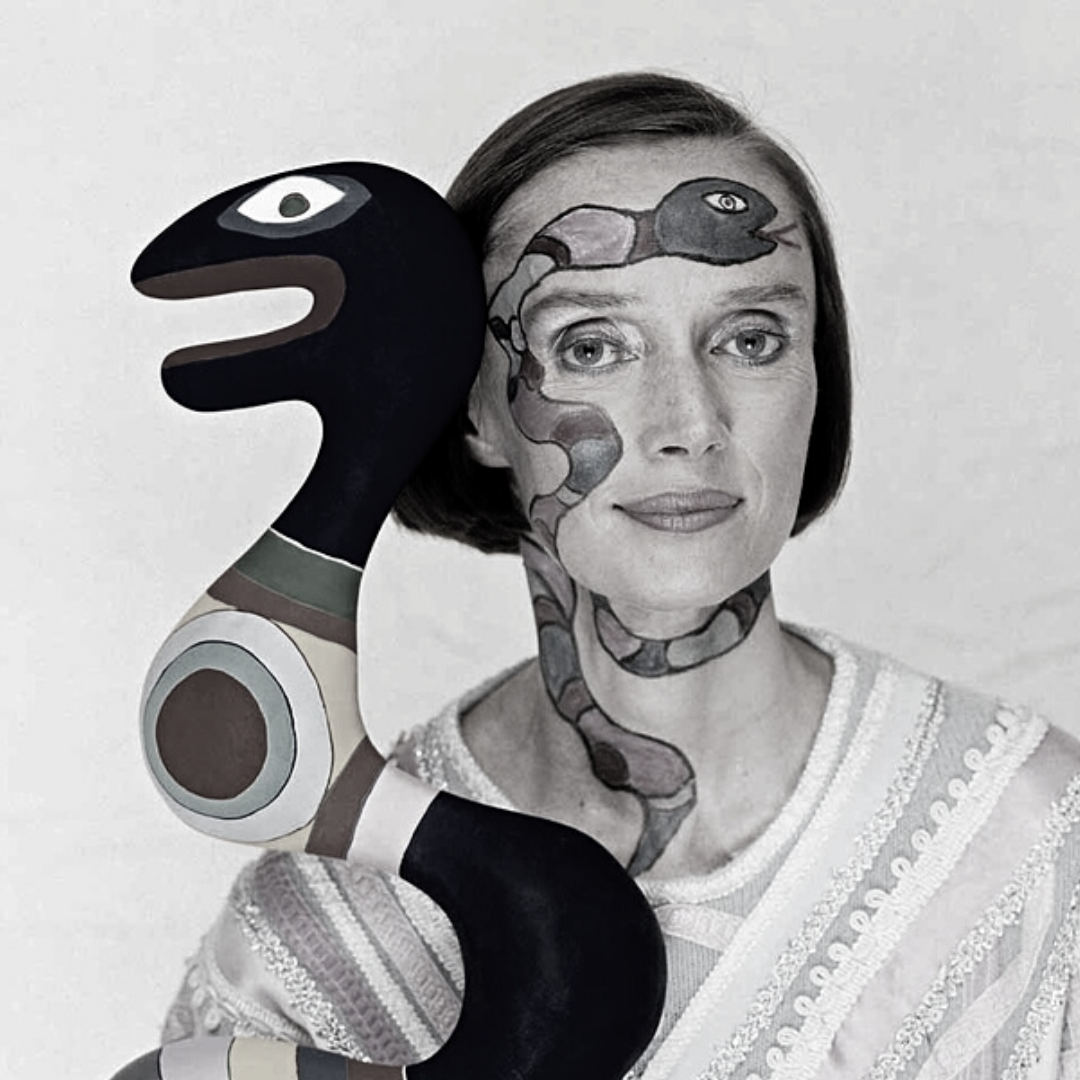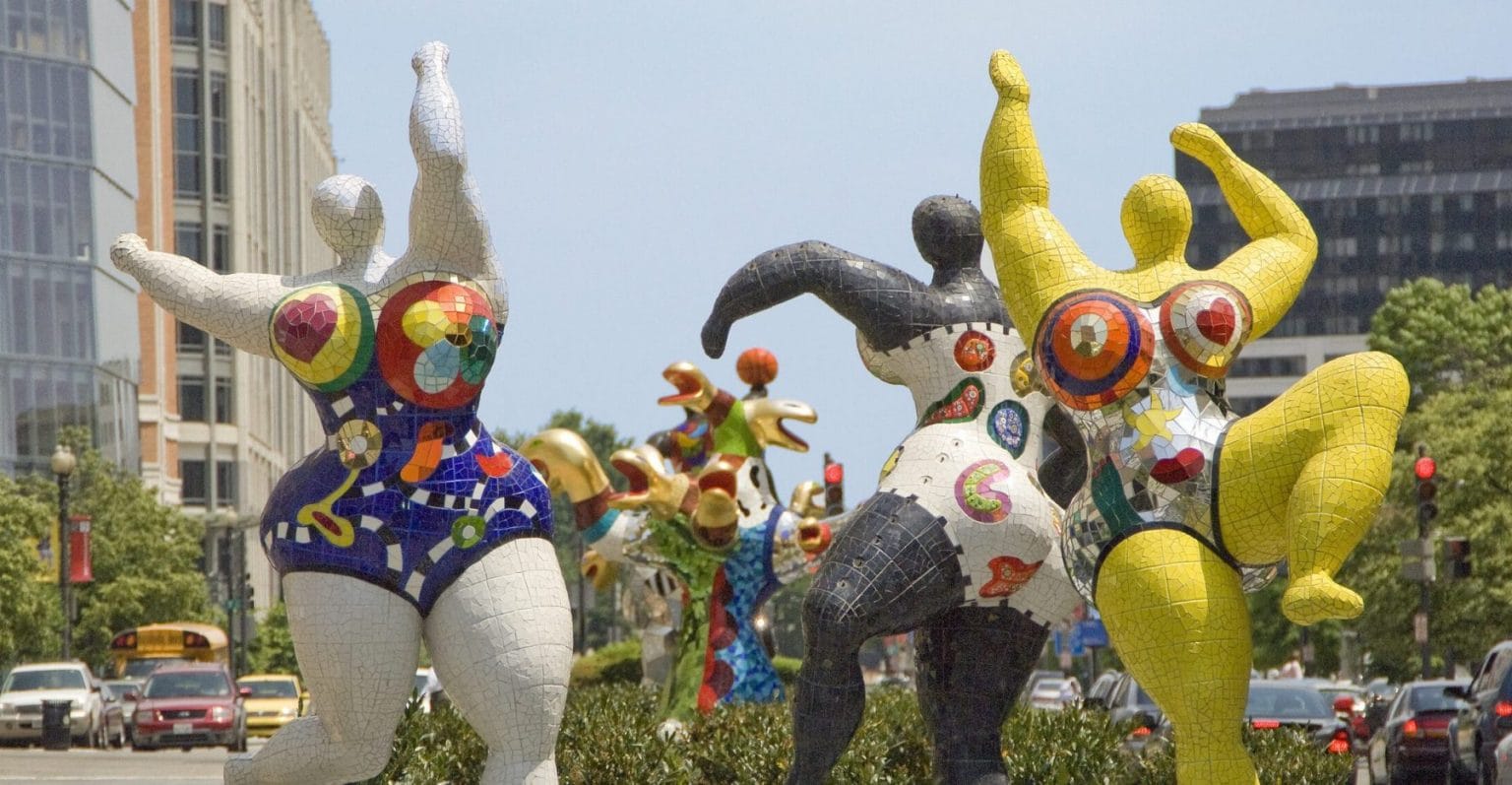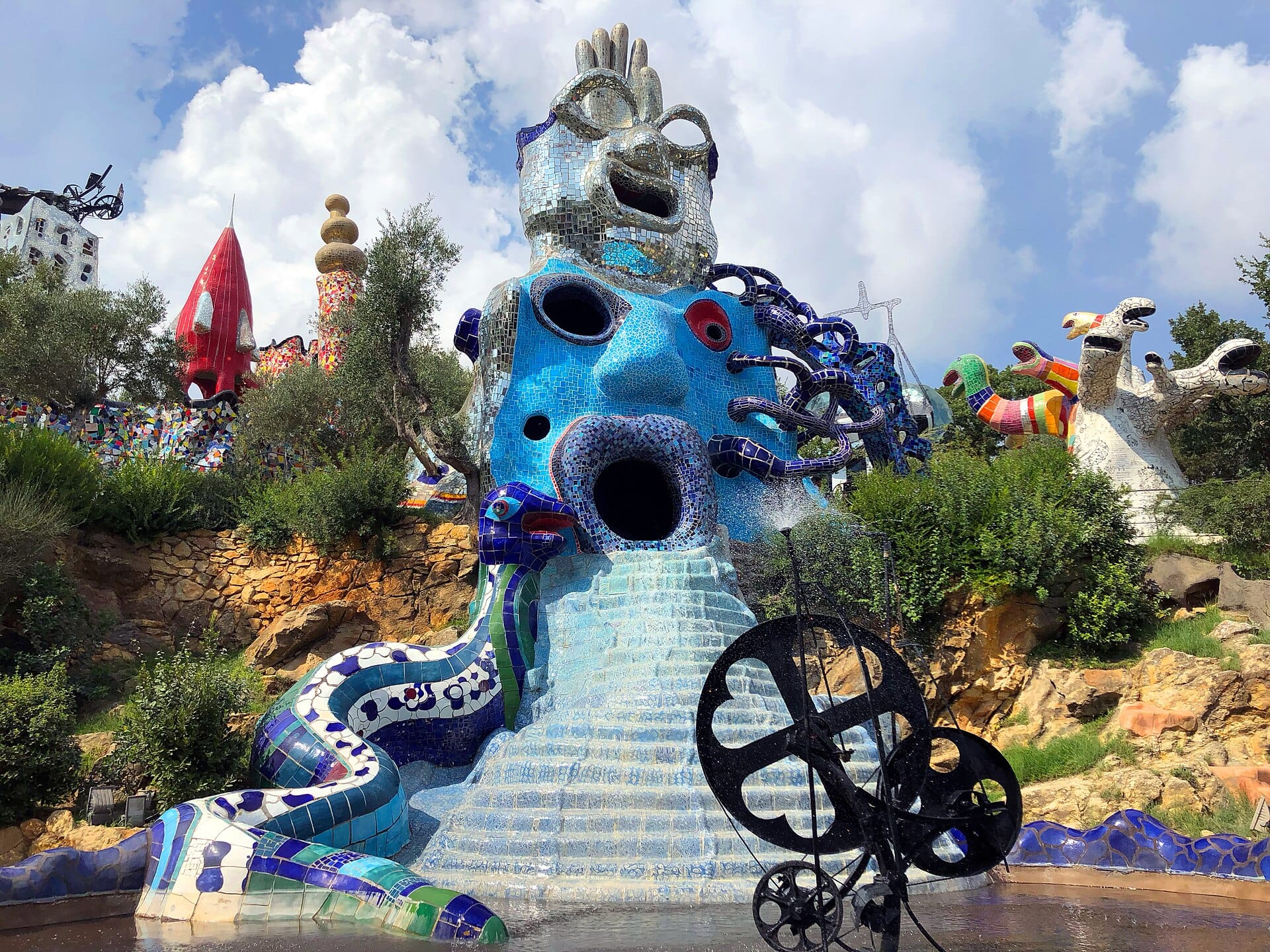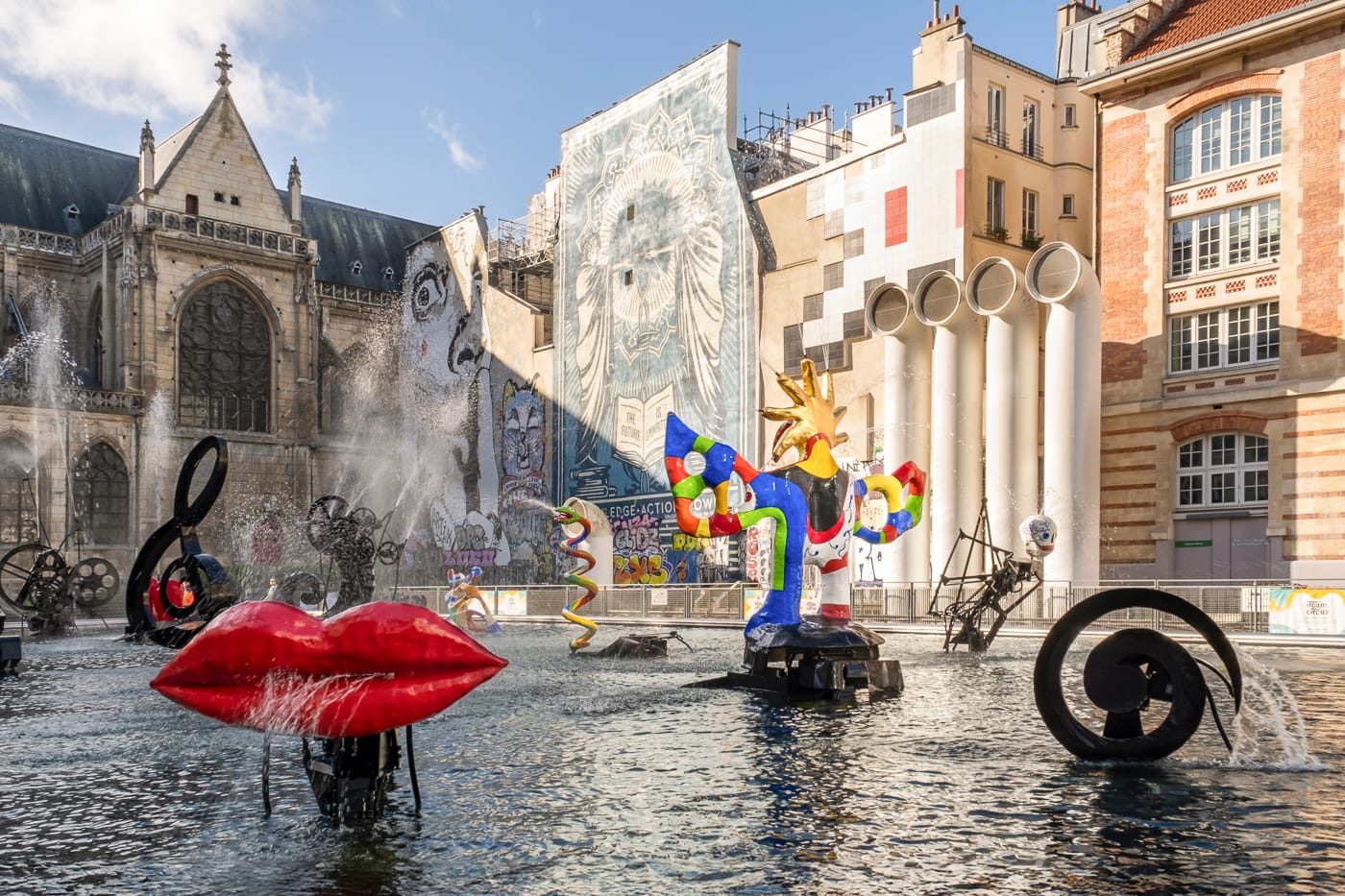Shooting Paintings or Niki de Saint Phalle’s Explosive Artistic Revolution
Niki de Saint Phalle was a pioneering French-American artist renowned for her bold and innovative approach to art. Her work, celebrated for its vibrant colours, dynamic forms, and profound socio-political themes, has had a lasting impact on the art world.

Over her extensive career, Niki de Saint Phalle (1930-2002) explored various media, including painting, sculpture, and public installations. Her commitment to challenging societal norms and exploring complex themes related to gender, identity, and power has cemented her place as one of the most influential artists of the 20th century.
Early life and influences
Niki de Saint Phalle was born Catherine-Marie-Agnès Fal de Saint Phalle on 29 October 1930 in Neuilly-sur-Seine, France. Despite coming from a wealthy background—her father was a French banker, and her mother was an American socialite—her early life was marked by significant personal trauma. Saint Phalle’s childhood was troubled by a strained family environment and experiences of sexual abuse, which profoundly influenced her artistic vision and personal development.
Her education was marred by a sense of alienation, and she struggled with the rigid expectations of her upbringing. At the age of 18, she moved to New York City, where she began working as a model and actress. This period exposed her to a vibrant and diverse art scene, igniting her interest in pursuing an art career.
During her time in New York, Saint Phalle encountered various artistic influences, including Abstract Expressionism and the burgeoning Pop Art movement. Initially focusing on painting, she soon began experimenting with different media and techniques. The early 1960s marked a pivotal shift in her artistic approach, leading to the creation of some of her most iconic and innovative works.

The shooting paintings
One of Saint Phalle’s most revolutionary contributions to the art world was her series of "Shooting Paintings" which she began in the early 1960s. This series involved shooting at canvases embedded with paint-filled bags using a rifle. The explosive impact of the bullets created abstract compositions, reflecting themes of aggression, destruction, and the release of pent-up emotions.
These works represented a radical departure from traditional artistic practices and served as a commentary on the nature of art and the role of the artist. By using violence as a creative tool, Saint Phalle challenged conventional notions of beauty and technique, making a bold statement about the boundaries of artistic expression. The series garnered significant attention and established her as a provocative and innovative artist.
The Nanas
In the mid-1960s, Saint Phalle began developing her "Nanas" series, which would become one of her most iconic contributions. The Nanas are large, voluptuous sculptures of women, characterised by their joyful and exuberant forms. Painted in bright, vibrant colours and depicted in playful, dynamic poses, the Nanas celebrate femininity and female empowerment.

Saint Phalle’s Nanas challenged traditional representations of women in art and society. Through these sculptures, she aimed to reclaim and redefine the image of women, presenting them as strong, confident, and joyful figures. The Nanas became symbols of empowerment and feminist ideals, resonating with audiences and influencing subsequent generations of artists.
The Tarot Garden
One of Saint Phalle’s most ambitious projects was the creation of the Tarot Garden (Parco dei Tarocchi) in Italy. Inspired by tarot cards and her fascination with esoteric symbolism, the Tarot Garden is a sprawling installation in the Tuscan countryside. The project began in the late 1970s and continued for nearly 15 years, showcasing Saint Phalle’s visionary creativity and dedication.
The garden features a series of large-scale sculptures and architectural elements inspired by tarot cards. Notable structures include the "Empress" and "Magician" towers, as well as a massive sculpture of the "Fool," which serves as an interactive space for visitors. The use of vibrant mosaics, glass, and concrete adds to the surreal and immersive nature of the installation. The Tarot Garden remains a testament to Saint Phalle’s ability to transform a landscape into a living, interactive work of art.

Public art and social activism
Saint Phalle’s commitment to public art and social activism is evident in many of her works. Her installation "Hon" (Swedish for "she"), presented at the Moderna Museet in Stockholm in 1966, was a monumental piece that invited visitors to enter a giant sculpture of a reclining woman. The work was a provocative commentary on gender and sexuality, challenging traditional representations and offering a space for exploration and interaction.
In addition to "Hon," Saint Phalle created several public art installations addressing social issues and engaging with communities. Her work often reflected her commitment to social justice, including efforts to combat violence and promote peace. Saint Phalle used her art as a platform to raise awareness about various social and political issues, demonstrating her belief in the power of art to effect change.
Saint Phalle’s career included notable collaborations, particularly with Jean Tinguely, a Swiss artist known for his kinetic sculptures. Their partnership resulted in several joint projects, including the creation of the "Hon" installation. Their collaborative work explored themes related to art, technology, and society, reflecting a mutual influence and support.
Saint Phalle was also influenced by various artistic movements and figures, and her interactions with other artists and exposure to diverse artistic practices played a significant role in shaping her creative vision.
Saint Phalle’s life was marked by personal challenges, including a turbulent marriage to Jean Tinguely and struggles with mental health. Despite these difficulties, her resilience and determination were evident in her art and activism. Her personal experiences, including childhood trauma and mental health issues, informed her creative work and motivated her drive to address societal issues through her art.
Her marriage to Tinguely was both a source of inspiration and conflict. The couple collaborated on various projects, but their relationship was also marked by tension and difficulty. Despite the challenges, Saint Phalle and Tinguely continued to influence and support each other’s work.

Niki de Saint Phalle’s impact on the art world is both profound and enduring. Her innovative approaches to art-making, exploration of gender and identity themes, and commitment to social activism have left a lasting legacy. Her works continue to be celebrated and studied in museums and galleries worldwide.
The Tarot Garden stands as a significant testament to Saint Phalle’s visionary creativity, and her Nanas remain iconic symbols of female empowerment and joy. Her public art installations and activism have influenced contemporary artists and activists, reflecting her belief in the power of art to inspire, challenge, and engage with audiences on a profound level.
Saint Phalle’s contributions are preserved through various retrospectives and exhibitions, including major shows at institutions such as the Musée d'Art Moderne de la Ville de Paris and the Centre Pompidou. Her legacy is also maintained through ongoing projects and initiatives dedicated to her work, ensuring that her contributions to art and activism are recognised and celebrated.
Niki de Saint Phalle was a revolutionary artist whose work transcended traditional boundaries and challenged societal norms. Her vibrant and evocative creations, from the explosive energy of her shooting paintings to the joyful celebration of her Nanas, reflect a deep engagement with personal and political themes. Saint Phalle’s dedication to both her art and social activism has ensured that her contributions to the art world will be remembered and celebrated for generations to come.
Through her innovative vision and unwavering commitment to her craft, Niki de Saint Phalle has secured her place as one of the most influential and remarkable artists of the 20th century. Her legacy serves as a powerful reminder of art's transformative potential to inspire, challenge, and engage audiences on a profound level.





